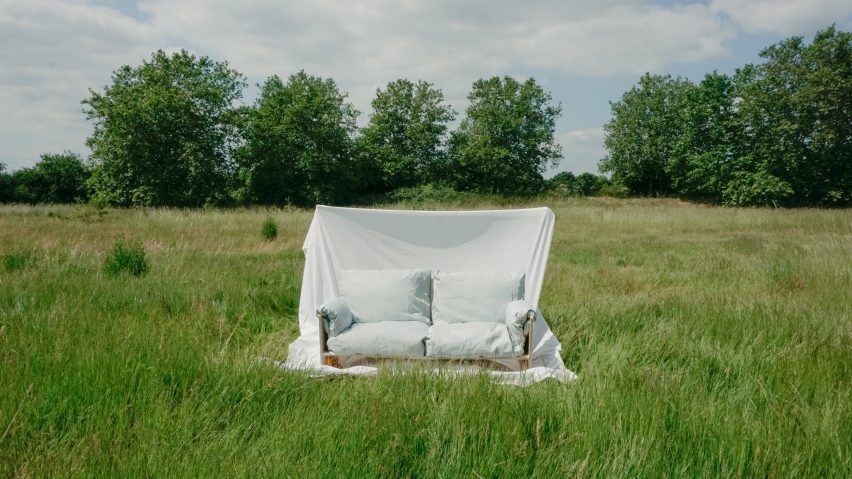
Ten design projects by students at Brunel University
Dezeen School Shows: playground equipment intended for children with ADHD is included in Dezeen's latest school show by students at Brunel University.
Also included is a portable sofa designed for renters and a shower system that aims to promote sustainable behaviour.
Brunel University
Institution: Brunel University
School: Brunel Design School
Course: Industrial Design and Technology (BA)
School statement:
"Brunel's Industrial Design and Technology course trains creative, practical and visionary thinkers with an interest in social issues, iterative problem solving, user-centred design and visual design language.
"Students use computer-aided design, physical model making and practical experimentation to develop creative solutions to current and future user needs.
"The course has a strong alumni network and is accredited by an institution of engineering designers.
"Brunel's new design course focuses on developing students' creative, digital and technical skills, giving students the ability to innovate the aesthetic, functional and emotional aspects of their design.
"This course is ideal for individuals with a passion for both physical and digital design, and who prefer learning about technology through practice.
"Brunel's product design engineering course is for technically-inclined and analytical thinkers who are confident with mathematics and engineering principles, and enjoy solving complex design problems.
"This course provides students with the integrated knowledge and skills to develop products that are visually and functionally sophisticated."
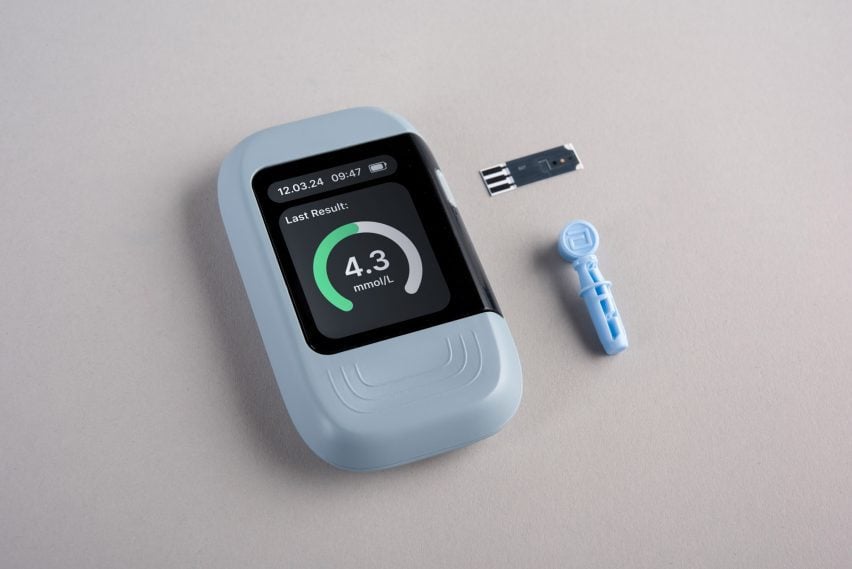
Kali by Sophia Kambouris
"Kali, designed in collaboration with Guy's and St Thomas' Hospital and Kalium Health, is the first blood potassium monitoring solution designed for use by patients themselves – helping individuals suffering with potassium imbalances to take control and better manage their condition.
"Kali is a monitoring system that allows people living with potassium imbalances to test their potassium levels anywhere and at any time – the device has a test strip reader where individuals will insert a test strip, apply a drop of blood, then wait while the device analyses the potassium concentration which is displayed on the screen in under one minute.
"It comes with a smartphone app which allows users to store their test result history, provides suggestions on how to restore high or low levels and prompts users to take medication, log food and symptoms – the Kali system has been designed alongside clinicians and patients to encourage and empower patients to manage their condition better."
Student: Sophia Kambouris
Course: Industrial Design and Technology (BA)
Email: sophiakambouris[at]gmail.com
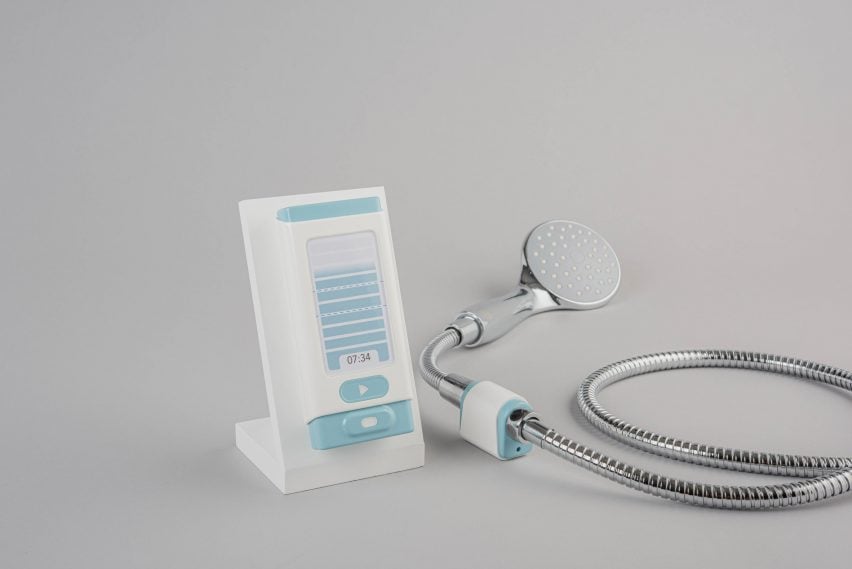
Aquatine by Wilf Memmott
"Aquatine is a smart shower system that helps all shower routines be as time, money and water efficient as possible.
"With the rise of global temperatures and a growing population, water is becoming increasingly scarce – the United Nations predict that 50 countries will face water shortages by 2025.
"The Aquatine system aims to reduce the amount of water wasted by taking excessively long showers whilst providing support for complex shower routines such as cold, staggered and hair care shower routines, with its ability to itemise the water usage of a household using user profiles and setting up custom segmented shower routines."
Student: Wilf Memmott
Course: Industrial Design and Technology (BA)
Email: wilfredhmemmott[at]gmail.com
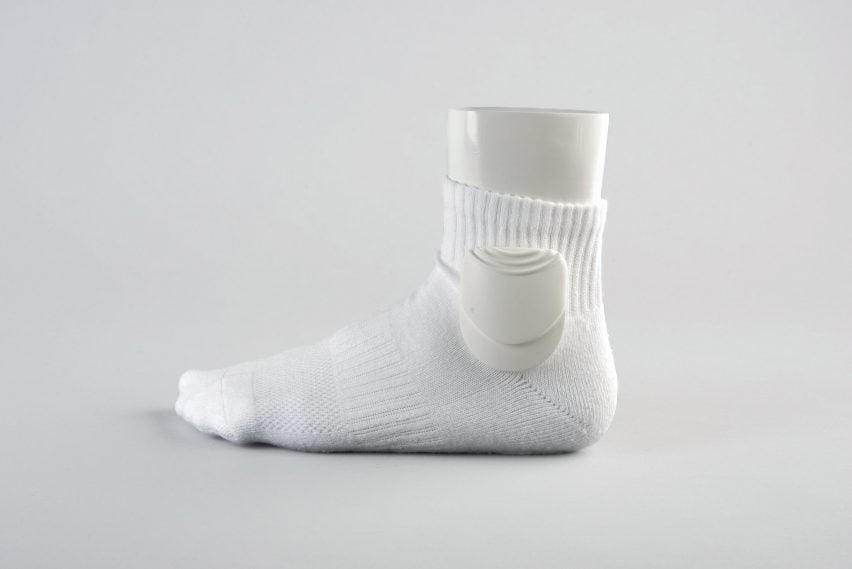
Talus by Emmanuel Huliganga
"64 per cent of people won't seek medical support after an ankle sprain – dismissal of treatment can lead to further development of physiological issues throughout an individual's lifetime.
"Susceptibility is a larger issue than many of us are aware of – there is a 70 per cent chance of developing chronic ankle instability post-ankle injury.
"Talus, made in collaboration with Zeal-lifestyle, is built to be portable and intuitive to use for all ages, aiming to streamline rehabilitation planning for practitioners helping users who have suffered from sprain incidents."
Student: Emmanuel Huliganga
Course: Industrial Design and Technology (BA)
Email: echuliganga[at]gmail.com
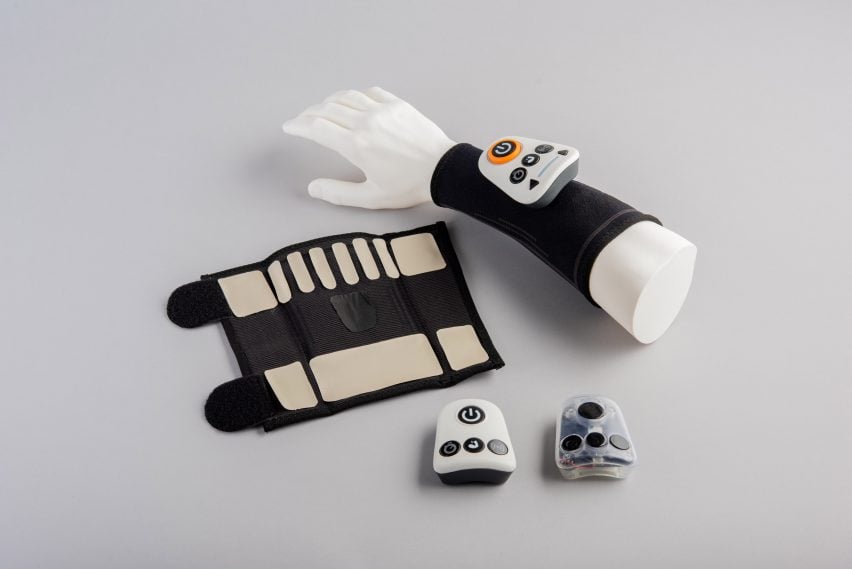
Nura by Kimon Panayotou-Ennes
"Nura, designed in collaboration with CardioCrown, is a stroke rehabilitation device that combines functional electrical stimulation and virtual reality (VR) to give stroke survivors the ability and autonomy to regain mobility and function in their upper limbs after a stroke.
"Nura is a targeted, gamified and personalised rehabilitation experience for stroke survivors – many stroke survivors aren't receiving sufficient support for upper limb rehabilitation, both in hospitals and at home.
"Nura addresses this gap by simplifying the process of providing functional electrical stimulation through an innovative multi-pad electrode arrangement that enables a one-touch adjustment of what muscles are activated."
Student: Kimon Panayotou-Ennes
Course: Industrial Design and Technology (BA)
Email: kimonennes[at]gmail.com
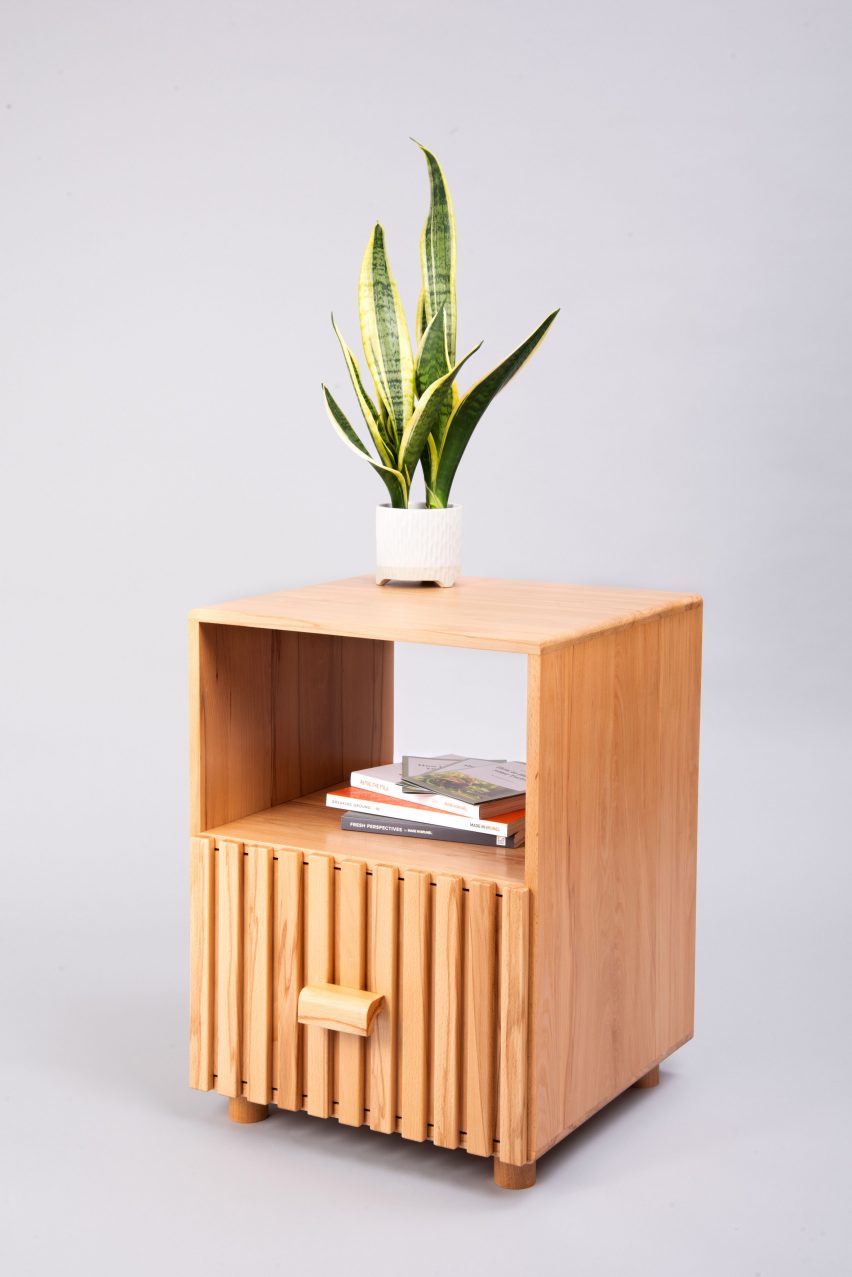
Lula by Georgia Garman
"In recent years, the seemingly simple task of hibernating your tortoise has become increasingly complex and, in many cases, very unsafe due to climate change.
"With 900,000 pet tortoises in the UK, owners are battling a yearly struggle of whether they should hibernate their pet – consequently, owners began the fridge hibernation method, which is time and resource intensive, with risks of freezing or suffocation.
"Lula overcomes these issues by combining cooling technology with furniture design – the refrigerated drawer regulates the internal temperature at three to six degrees Celsius and the integrated app will notify the owner if any factors leave optimum levels."
"A comprehensive user guide on 'how to hibernate' your tortoise is included to combat the issue of vast quantities of conflicting information online, and the elevated aesthetic transforms a practical appliance into a contemporary piece of furniture, providing worry-free hibernation for tortoise owners."
Student: Georgia Garman
Course: Design (BSc)
Email: georgiabethgarman[at]live.co.uk
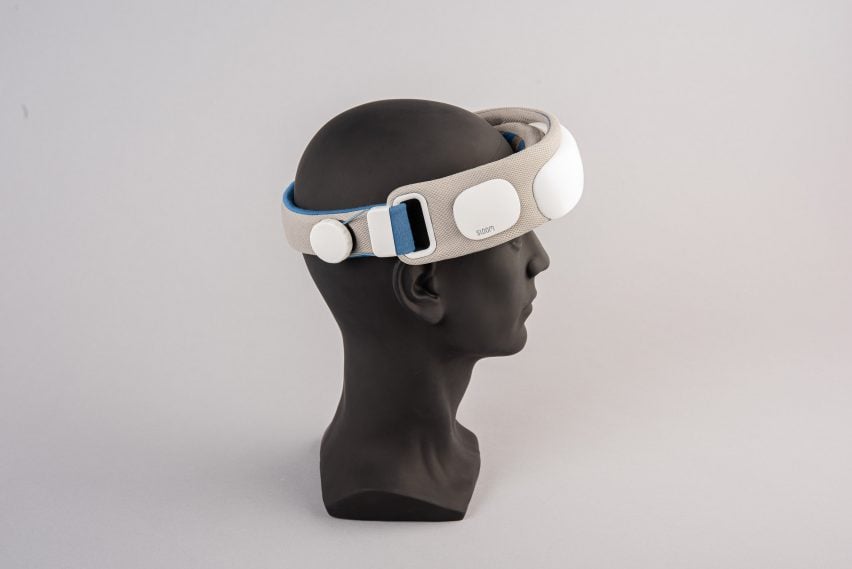
Sloom: Enhancing Memory by Sean Heaney
"Using the principles of targeted memory reactivation (TMR), Sloom improves memory retention whilst you sleep, accurately pinpointing sleep stages using electroencephalography (EEG), an accelerometer and a machine learning algorithm trained using a neural network.
"The device is worn during sleep, accelerating learning and memorisation, employing specific audio cues delivered during optimal sleep stages when the brain is most receptive to memory processing.
"This timing is vital for reinforcing learned information effectively; Sloom utilises 4-channel EEG to continuously monitor brain activity, essential for identifying optimal moments for cue delivery – these electrodes, alongside an accelerometer, feed into a machine learning algorithm to accurately estimate the sleep stage of the user, ensuring that audio cues are delivered during peak memory consolidation phases for maximal enhancement of memory retention."
Student: Sean Heaney
Course: Product Design Engineering (BSc)
Email: seanheaneydesign[at]gmail.com
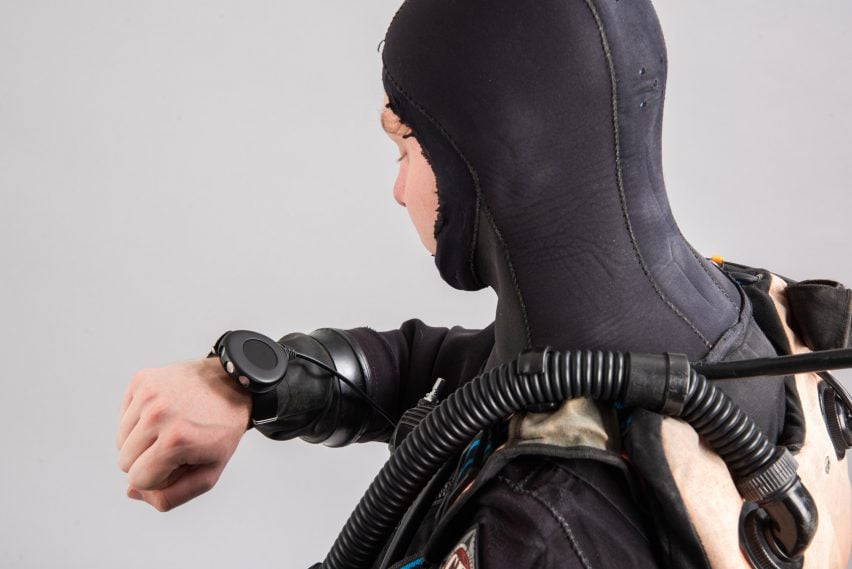
Shoal Dive Separation Solution by Joseph Billington
"Shoal enables an active response to buddy separation for recreational divers, providing divers with their buddy's live position to enhance the buddy diving system, without impinging on the dive experience.
"Scuba divers are encouraged to participate in the buddy system, diving in pairs, to improve safety and support underwater, yet 83 per cent of scuba diving fatalities occur alone without a fellow diver there to assist.
"Current products enable communication between divers through vibrations, audible sounds or preset messages, however, the more complex the communication, the increase in associated price which excludes the average recreational diver; no publicly available product enables live tracking of a dive buddy and specialist product solutions, which do offer live tracking, are sold on a contract basis.
"Shoal uses an array of ultrasonic transceivers to communicate the diver's position and triangulate the incoming signal from the buddy's system – using frequencies between 55 kHz and 110 kHz means communication is 'silent' to the diver whilst achieving a maximum range of 45 metres."
Student: Joseph Billington
Course: Product Design Engineering (BSc)
Email: 13jbillington[at]gmail.com
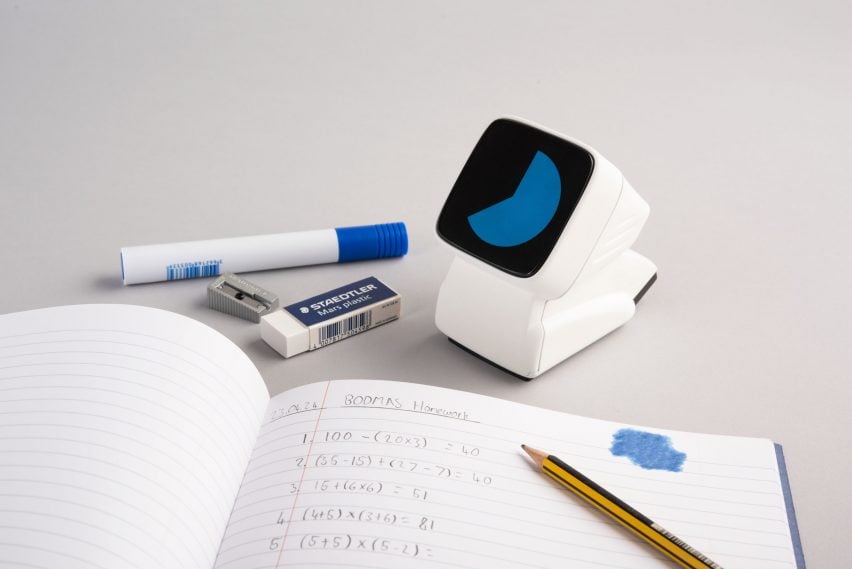
Deski by Dylan Parry
"Deski is an engaging and interactive homework companion to help children with ADHD become confident, independent learners.
"ADHD is the most common neurodevelopmental disorder in the UK, affecting five per cent of children, and homework is a key area they find challenging; common symptoms include lack of focus, difficulty self-monitoring, difficulty with time management and disorganisation, all of which can have a detrimental effect on the child's confidence and mental health.
"There is a lack of products designed to help students with ADHD, and many recommended homework techniques rely heavily on parental involvement – too much reliance on parents or teachers can lead to prompt dependency, where the child becomes completely dependent on others to act as their executive functioning.
"Deski addresses these problems by allowing students to create personalised homework routines, setting the work time, break time, repetitions and colour of the timer face for each subject – they can then remove the device from the dock and scan the colour on their homework (for example a book cover, highlighted area or post-it notes) using the colour sensor in the device to begin the corresponding routine."
Student: Dylan Parry
Course: Product Design Engineering (BSc)
Email: dylangrparry[at]gmail.com
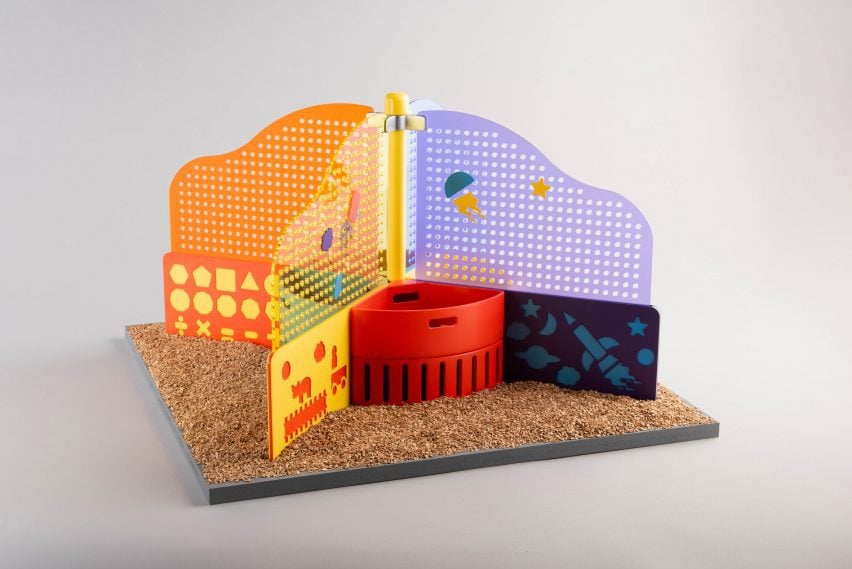
Doodle Dot by Lily Tregenza
"Meet Doodle Dot, playground equipment designed to encourage self-motivated social development in early childhood.
"Research indicates that children who are socially isolated in the early years are more prone to experiencing symptoms of ADHD, loneliness, diminished job optimism and reduced physical activity by the time they reach 18 years of age – unfortunately, there is a lack of support in schools to address these challenges, exacerbating the issue.
"Tailored specifically for children aged three to five, Doodle Dot presents a child-motivated solution, promoting collaborative construction at school in an anxiety-reducing environment, with a dynamic assortment of shapes that empower children to build their own imaginative worlds."
Student: Lily Tregenza
Course: Industrial Design and Technology (BA)
Email: lilytregenza[at]icloud.com

Strung by Casper Bosinius
"A collapsible sofa designed for renters, Strung tackles the challenges of frequent relocation and the resulting premature disposal of furniture within the rental market.
"It presents a mobile and adaptable solution that increases product lifespan, fosters a sense of belonging, and ultimately enhances the ability of young renters to settle in a transient environment.
"The result is a three-seater sofa that fits in a tote bag and can be moved within a taxi – throughout development, this remained a consistent goal, fostering young adults in urban areas to move freely and at a lower cost by removing the need for van hire.
"The need for mobile, yet comfortable and stylish furniture is expressed through renters' reluctance to invest in quality furnishings due to short letting agreements and the inability to predict living circumstances beyond current tenancies – born out of user and manufacturing constraints, Strung was also designed for low-cost manufacturing following democratic design principles, ensuring the intended user group can monetarily access the product."
Student: Casper Bosinius
Course: Product Design Engineering (BSc)
Email: casper[at]bosinius.com
Partnership content
This school show is a partnership between Dezeen and Brunel University. Find out more about Dezeen partnership content here.